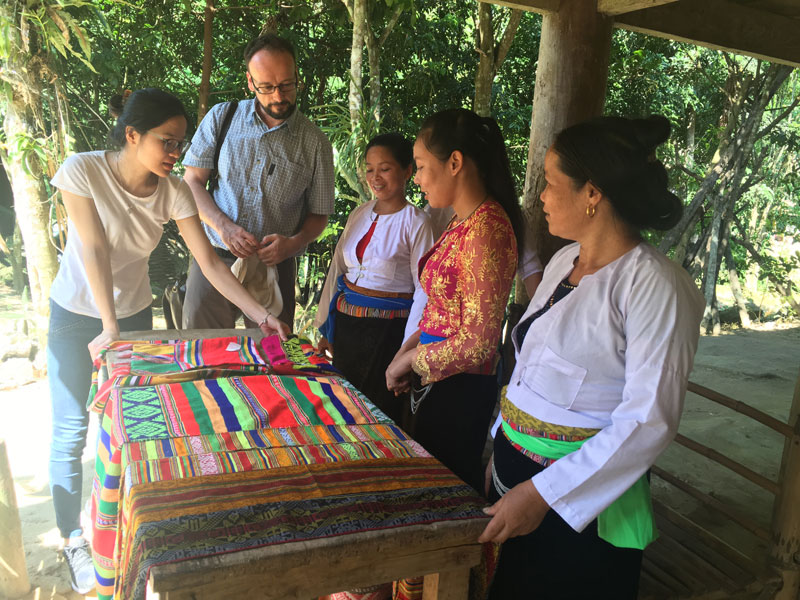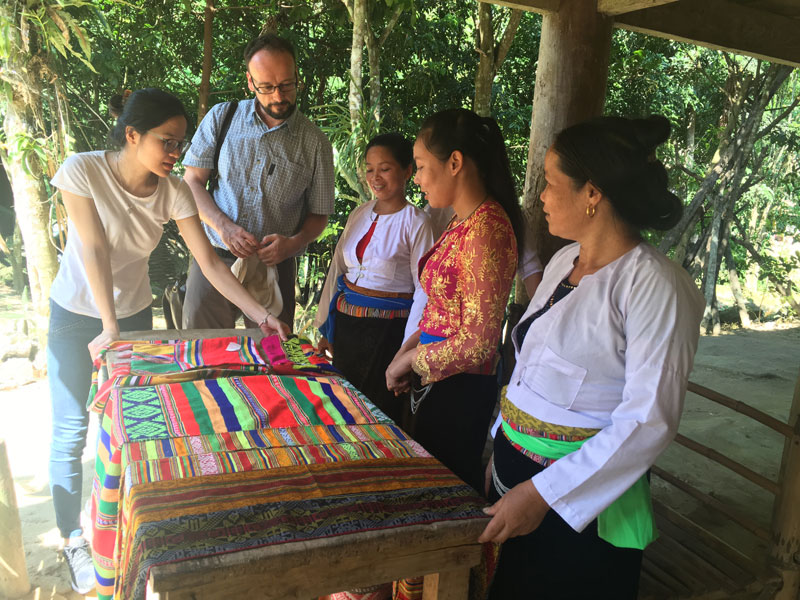



International tourists can discover and
experience the life of indigenous people on journey to Mu Waterfall Tourist
Site in Tu Do commune.
The tourism potential of the local is very
plentiful. Featured tourist products which are interesting in spiritual
religions and cultural relics have to be mentioned as Dinh Khoi Festival – An
Nghia commune, Dinh Khenh Festival – Van Son commune, Den Thuong Festival – Vu
Ban town, Cay Da temple in Voi hamlet, Du Voi Festival – Lien Vu commune, Dinh
Coi Festival – Binh Chan commune, Ruoc But Khu Dung Festival – Nhan Nghia
commune, Xuong Dong Festival – Yen Phu commune and Chay Dat Chay Muong Festival
– Ngoc Lau commune. The potential for landscapes can be a tourist site named Mu
Waterfall in Tu Do commune which is recognized as a famous landscape at
provincial class. The cultural relics, scenic relics and revolutionary
historical relics are also the strength of the district tourism such as Xom
Trai Cave – Tan Lap commune, Lang Vang Stone Roof – Yen phu commune,
Revolutionary Muong Khoi War Zone – An Nghia commune, Khu Dung Cave - An Nghia
commune, Trang hamlet – Thuong Coc commune where Tay Tien Regiment No. 52
marked history, and Khi hamlet – Nhan Nghia commune where Hoa Binh Office of
The Province was established.
Especially, since 2017, the district took
inventory of relics, supplied some information of relics, managed, advertised
the tourism branches (walking routes from Thanh Hoa province to communes: Tu Do
– Ngoc Lau – Ngoc Son – Tan My) and lots of hotels, accommodation centers and
public motels, assessed and ranked tourist accommodation. In addition, the
district built on and developed some tours, routes and tourist attractions, for
example of Mu Waterfall in Tu Do commune; introduced and advertised interesting
tourism attractions as a paragliding club at two communes: Ngoc Son and Chi
Dao, a tour of eco-walking tourism combining cultural tourism in Ngoc Son - Ngo
Luong, a 30-kilometer-walking tour from Thanh Hoa - Tu Do - Ngoc Lau - Ngoc Son
– Ngo Luong - Tan My. Finally, the district gradually perfects tourist,
resting, scenery and cultural tours within 3 days 2 nights to visit Tay Tien
Monument, Van Son commune, Xom Trai Cave and Quy Hoa commune, or one-day tours
of ecological and cultural tourism as visiting Thuong Temple, Vu Ban commune,
Lang Vang Stone Roof and Muong Khoi War Zone.
By strengthening the propaganda and promotion
on the media and the district website, registering to organize the festival and
signing commitments to comply with the regulations of festival organization as
well as perfecting facilities and tourist services, Muong Vang Tourism is
creating attraction and delivering satisfaction to visitors. The whole district
currently has 12 accommodation centers, a two - star hotel with 84 rooms and
124 beds, five public motels and a tourist branch in Tu Do commune. In 2017,
the total number of visitors to the district reached 27 thousands people,
including a thousand of international travelers.